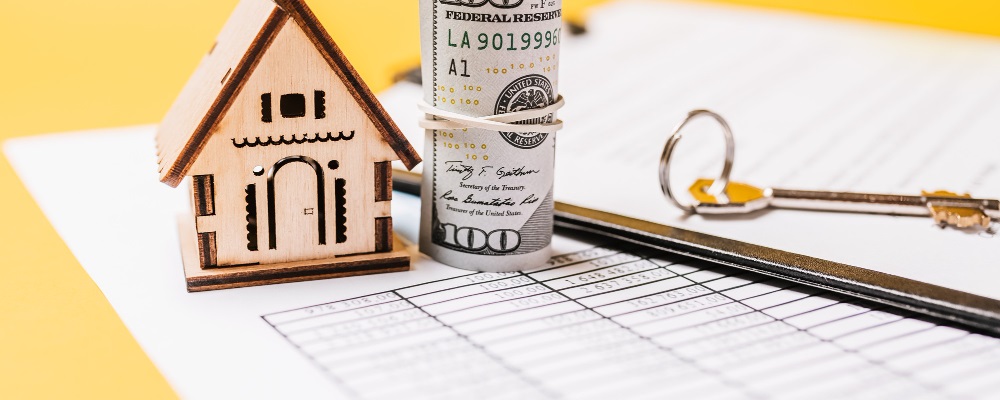Recently, the Indian government empowered the nation to levy taxes on property transactions. Property taxes stand as a leading source of revenue generation for local governments across the nation. Imposed in the form of stamp duty, the Registration Act of 1908 makes it mandatory for homebuyers to pay stamp duty at the time of property registration.
Whether you plan to buy, sell, or invest in properties, check out the Stamp Duty and Registration Charges in Delhi. If you are a homebuyer, and the purchased property remains unregistered in your name, you do not enjoy the ownership of the property by a court of law. The registration of the purchased property and the ownership of the property get transferred from the previous owner to you in the government records. Therefore, The Registration Act of 1908 mandates every buyer to pay a stamp duty charge at the time of property registration.
Hence, as a leading construction company in Delhi, Brick & Bolt explain all about stamp duty and property registration charges, including what it is, factors affecting stamp duty and registration charges, documents requirements, how to calculate it, and how to pay stamp duty and registration charges online.
Explaining Stamp Duty and its Significance in Property Transactions
Stamp Duty plays a crucial role in property transactions across Delhi. The government is levying the tax on properties acquired through various means, including gift deeds, sales deeds and conveyance. The Delhi government sets the rate, which varies significantly depending on multiple factors, such as the type of property and the owner’s gender. These rates are subject to revision to align with the market trends and policy objectives.
Understanding the intricacies of stamp duty is crucial for anyone planning to buy a home or engage in property transactions in Delhi. This understanding is not just about the legality of the transactions but also about the financial implications. Proper assessment and compliance with stamp duty regulations ensure a smooth and legally sound property transfer in the city while also helping you plan your finances effectively.
Stamp Duty and Registration Charges in Delhi
In the Indian capital city, property registration charges play a crucial role in the legal transfer of ownership. The government calculate the charges based on the current market value of the registration of your property.
The registration fees amount to 1% of either of the consideration amount agreed between the buyer and seller or the value as per Delhi circle rate of the stamp duty, whichever is higher. The mechanism ensures that the government receives a fair share of the revenue from property transactions while preventing the undervaluation of properties from evading taxes. Determining property registration charges based on higher values between the consideration amount and the circle rate helps maintain transparency and fairness in property transactions across the city.
The New Delhi Municipal Council (NDMC) and Delhi Cantonment Board play significant roles in the governance and administration of specific areas within Delhi. Often, properties located within their jurisdiction experience variations in stamp duty and registration charges compared to other areas in the city.
Factors Affecting Stamp Duty and Registration Charges
Stamp Duty and Registration Charges in Delhi depend on various factors.
Property Location:
Your property’s location forms the primary determinant within the city. The different areas in the city have different rates set by the local authorities, including the Delhi government and administrative bodies like NDMC and the Delhi Cantonment Board.
Buyer’s Age:
Your age also influences these charges, as some jurisdictions offer concessions or exemptions to senior citizens and specific categories.
Buyer’s Gender:
The buyer’s gender is important in Stamp Duty rates in Delhi 2024. The government levies lower rates on female owners to promote gender equality and empower women in property ownership.
Property Type:
Another critical factor involves the type of property. Residential and commercial properties have different rates and regulations governing stamp duty and registration charges.
The state government assesses these factors collectively to determine the final costs of property transactions in Delhi. It highlights the significance of careful research and consultation with legal and real estate professionals.
Calculation of Stamp Duty and Registration Rates in Delhi
As a prospective property buyer in Delhi, you have the power to access online resources and stamp duty calculators. These tools provide you with valuable insights into the estimated charges associated with your intended purchase. By simply inputting the essential details about your choice property, such as the location, type, and value, you can generate an approximate figure for stamp duty and registration charges. This knowledge empowers you to understand the financial implications of your investment and plan accordingly.
While calculating stamp duty and registration charges in Delhi, ensure that the circle rate established by the government is considered. The circle serves as a benchmark for property values in a particular area and plays a pivotal role in determining your property’s registration fees. As a buyer, you must stay informed about the latest guidelines and updates about the circle rates, as they ensure accurate calculations. When you have regular updates, you have access to the current information. It helps you make informed decisions and avoid discrepancies during property registration. Staying informed and using the available online tools, you can navigate the complexities of stamp duty and registration charges effectively, facilitating a smoother transaction process.
Systematic Guide for Paying Stamp Duty Online

With the introduction of e-stamping techniques in Delhi, there are no offline channels, and you must pay the stamp duty through e-stamping. The centre appointed the Stock Holding Corporation of India Limited (SHCIL) as the agency responsible for e-stamps. Therefore, homebuyers must visit the organization’s official portal and pay there.
Online stamp duty payment is simple yet efficient. You can complete it from any location to save time and effort. To make the payment, follow the steps below.
Step 1: Visit the Official Portal
First, visit the official website of Stock Holding Corporation Ltd. It’s the gateway to initiate your stamp duty payment in the capital city of India.
Step 2: Register or Create an Account
If you do not have an account in the portal, ensure that you create one with the required information, including your name, email address and phone number. Once you register your phone number, you will receive an OTP (one-time password) on your number. Follow the instructions mentioned on the portal and validate your account.
Step 3: Enter Details of Your Property
After logging in to the account, find the page dedicated to stamp duty. Enter the pertinent information about your property for which you are paying stamp duty. This information includes specifics like the area, nature and location of the property, and ownership information.
Step 4: Calculating the Stamp Duty
After you submit the data related to your property, the site will compute the application stamp duty, considering the current rates established by the state government.
Step 5: Uploading the Documents
The next step is to upload the required files in the order mentioned in the portal. You need to submit documents related to real estate, including an agreement to sell, or any other document required by the state government.
Step 6: Verification and Validation
After entering the required information, ensure that you examine it. Take note of the stamp duty amount, property specifics and attached document. Verify and ensure that all information is current and correct. If you want to make any changes, it is the right time to do so, as you can never change anything once you submit it.
Step 7: Make Payment
After confirming all the details, proceed to pay the computed duty amount. You can pay the stamp duty and registration charges through digital wallets, debit cards, credit cards, and net banking. For secure transactions, choose your preferred payment option and adhere to the mentioned instructions.
Step 8: Acknowledgement and Receipt
The SHCIL web portal will generate an acknowledgement copy or receipt after you have successfully paid the stamp duty. You must download and store it as proof of evidence of payment.
What are the Documents Required for Stamp Duty Registration Charges in Delhi?
You must submit some essential documents to complete your property registration process in Delhi. These documents serve as proof of ownership and facilitate the legal transfer of the property from the seller to the buyer. These include the following documents.
- ID and address proofs: The buyer and the seller must support with their identifications and address proofs. It can be any government documents, including an Aadhaar card, voter ID card, passport or driver’s license for verifying their identities and addresses.
- Passport-size photographs: The seller and the buyer must submit their recent passport-size photographs for documentation purposes.
- PAN card: The buyer’s and seller’s PAN (Permanent Account Number) card is essential for property registration and tax purposes. You must provide it as per regulatory requirements.
- Proof of TDS payment: If applicable, you must provide proof of tax deduction for the source (TDS) payment. As a buyer, you deposit TDS with the income tax authority after deducting it from the sale consideration amount.
- Sale deed: Your sale deed is a legal document officially transferring the ownership of the property from the seller to you. It includes all details, including the property’s description, sale consideration and transaction terms.
- E-stamp paper: The paper creates legal agreements or documents, including the sale deed. You must purchase the appropriate denomination of an e-stamp paper based on the transaction value.
- Registration fee receipt: You also require upload proof of payment for the registration fee, calculated based on the property value or circle rate.
Ensure you submit all the required documents on time. It helps you with a smooth and legally compliant property registration process in Delhi. The government advises the sellers and buyers to gather and organize these documents in advance. It facilitates the efficient completion of the registration process.
Conclusion
If you plan to buy a property in Delhi, comprehending stamp duty and property registration charges in Delhi is indispensable. With the advancement of technologies, you can familiarize yourself with the rates, calculations and procedures involved. These help you in making informed decisions and facilitate seamless transactions. The initiatives undertaken by the government to promote women’s homeownership and streamline the payment process contribute to fostering a transparent and inclusive real estate environment in Delhi.

